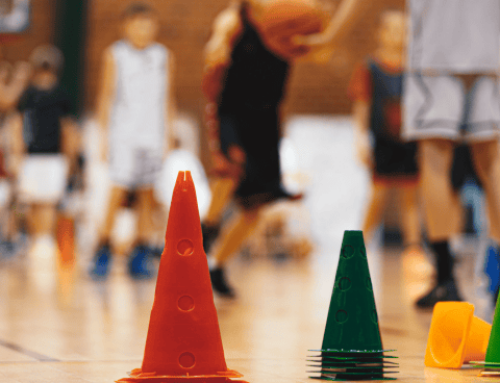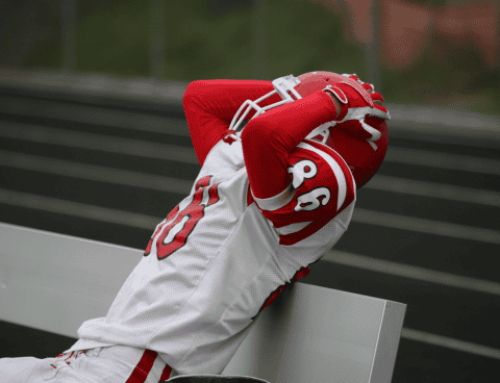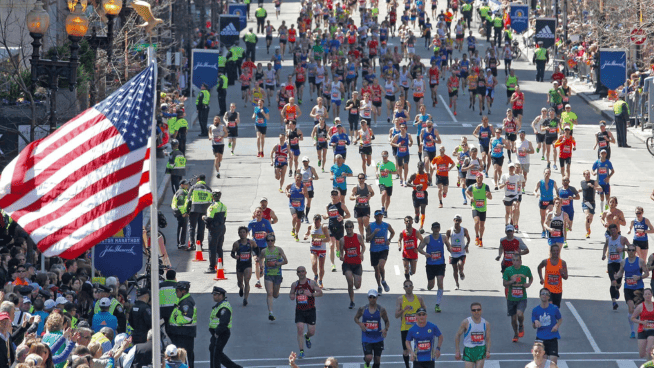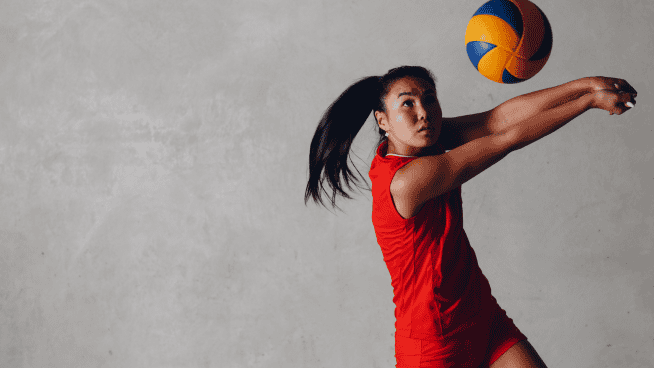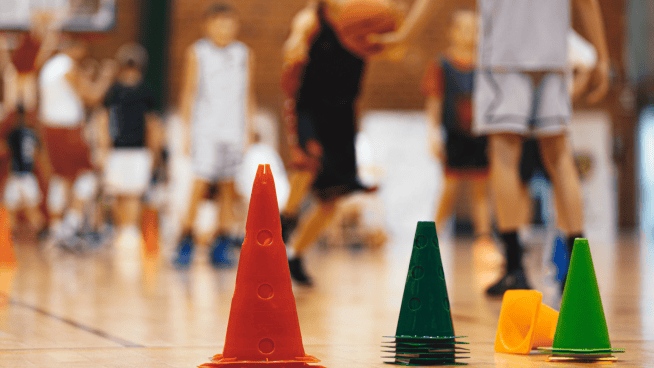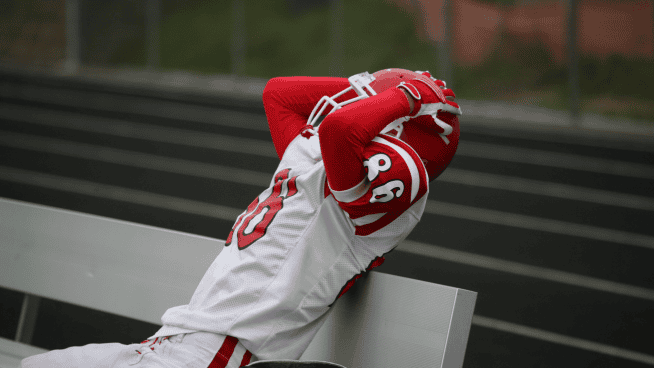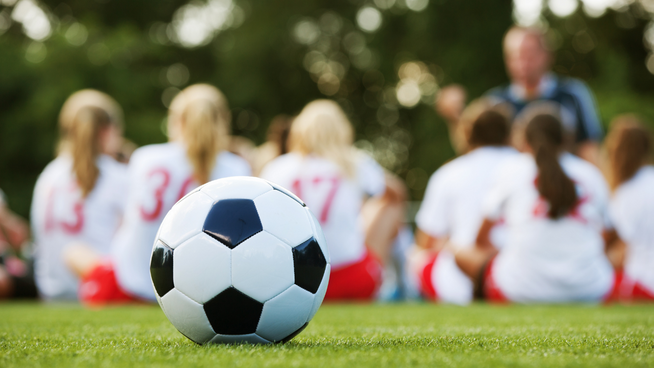If You’re Simply Assigning Sets and Reps, You’re Failing as a Strength and Conditioning Coach
Strength and conditioning coaches have never been more important.
While the one-sentence job description for the role might be something as simple as “Design training routines for student-athletes,” the responsibilities of a modern strength and conditioning (S&C) coach reach far beyond that. They are one of the most important people in an athletic program, and they can have an incredible impact on the athletes they work with. But if you’re simply scribbling the workout on a wipe board each day and then kicking your feet up, you’re reducing your impact and failing at many keys components of the job. With that in mind, here are five ways a good S&C coach impacts a program, regardless of the level of competition.
1. Physical Preparation
This is the easy one. The main reason the job of S&C coach exists is to help physically prepare athletes to be successful in their sport. At the end of the day, the S&C coach exists to help the athletes improve their performance. This is done by sharpening the physical tools their sport requires. For example, football players need muscle mass, strength, power, speed and agility. These are all qualities that the S&C coach can develop.
The S&C coach can make the athlete’s training more functional by knowing the sport skills and movement patterns required to be successful in their given sport. If the S&C coach doesn’t know what a sport like field hockey entails in terms of the required movements and actions, they can’t do their job to the best of their ability. Same goes for position—an offensive lineman’s responsibilities vary greatly from those of a wide receiver, and their training should reflect that. The better the S&C coach knows their athletes and what they’ll be expected to do on game days, the better they’ll be able to prepare them.
2. Preventing Injury
In addition to giving the athletes the physical tools to enable them to be successful, S&C coaches also have an important role in keeping athletes healthy. The most important ability is availability. Even if the athlete’s injury doesn’t keep them from competing, it will almost assuredly have a negative impact on performance.
Creating a base of functional strength is the first key to preventing injury. This is important because many injuries can be caused by a lack of strength. Many non-contact ACL injuries, for example, can be traced to weak hamstrings. Second, they can target specific motions and muscles to help prevent injuries. For example, imbalances in shoulder muscle contribute to rotator cuff injuries in throwing athletes. Finally, they develop fundamental skills whose absence can cause injuries. For example, if an athlete does not know how to land properly and often falls into knee valgus, then they are more likely to suffer a non-contact ACL injury.
3. Team-Building
S&C coaches train teams together. Ideally, the atmosphere should be one where everyone is working hard, together. Teammates push each other to reach their full potential and support one another through their struggles. They experience grueling workouts alongside one another and rally around a player as he attempts a PR.
Many athletes spend an enormous amount of time training with their team, and those sessions are where chemistry and camaraderie are built. However, an S&C coach can hamper this vital team-building time by doing things like playing favorites or not holding everyone to the same standard. The S&C coach must create and manage an atmosphere that helps the athletes come together as a team. A consistent set of expectations and rules goes a long way here, but being an ultra-strict disciplinarian all the time probably isn’t the best idea. The best weight room environments include the right mixture of focus and fun for the athletes.
4. Core Values
The S&C coach has the ability to teach and reinforce core values that are critical to athletic success. These include hard work, consistency, expectations, accountability, discipline and leadership.
Let’s start with expectations, accountability and discipline. We expect athletes to dress a certain way during S&C sessions. We expect them to be on time, to be where they’re supposed to be, and to execute the exercises the way they’ve been taught. They should clean up after themselves and leave the weight room as they found it, if not in better condition. They should also be respectful and supportive to you, their teammates, and anyone else who happens to be in the weight room. If these things don’t happen, then there should be consequences. A good S&C coach will pay attention to all of these things and react accordingly if the expectations aren’t being met. A bad S&C coach lets these things slide, creating a culture where athletes feel like they’re above expectations. This won’t just carry over to their performance in practices and games, but also to the classroom and general life.
When it comes to leadership, coaches should always be on the lookout for athletes who exhibit strong leadership qualities inside the weight room. These qualities include working hard, paying attention to detail, encouraging their teammates and having great energy. This leadership can be rewarded with simple acts of recognition, such as allowing them to break down the huddle with a few words to the team after the workout. Yes, we want to build stronger, faster and more resilient athletes. But we also want to build athletes with great work ethic, accountability and enthusiasm. You could have the most athletically gifted team in the world, but if they don’t have a set of core values guiding their actions, they won’t come close to realizing their full potential.
5. Be a Person
The S&C coach spends more time with athletes than their sports coaches. The S&C coach sees athletes in very difficult, stressful, fatiguing situations. This combination of factors means your athlete may feel comfortable confiding in you, and it also means you have a great idea of their character.
Be supportive of your athletes. If they come to you for advice, do your best to provide good guidance, or point them in the direction of someone who can. Likewise, if you see an athlete who doesn’t seem like themselves on a given day, don’t be afraid to ask what’s up. If you’re doing your job as a coach, you know these kids and should have an idea of what makes them tick. You want them to be successful not only in the weight room, but in games and in life, in general. You shouldn’t attempt to be every athlete’s best friend, but if you’re doing your job as an S&C coach, odds are that they respect you and respect your opinion.
RECOMMENDED FOR YOU
MOST POPULAR
If You’re Simply Assigning Sets and Reps, You’re Failing as a Strength and Conditioning Coach
Strength and conditioning coaches have never been more important.
While the one-sentence job description for the role might be something as simple as “Design training routines for student-athletes,” the responsibilities of a modern strength and conditioning (S&C) coach reach far beyond that. They are one of the most important people in an athletic program, and they can have an incredible impact on the athletes they work with. But if you’re simply scribbling the workout on a wipe board each day and then kicking your feet up, you’re reducing your impact and failing at many keys components of the job. With that in mind, here are five ways a good S&C coach impacts a program, regardless of the level of competition.
1. Physical Preparation
This is the easy one. The main reason the job of S&C coach exists is to help physically prepare athletes to be successful in their sport. At the end of the day, the S&C coach exists to help the athletes improve their performance. This is done by sharpening the physical tools their sport requires. For example, football players need muscle mass, strength, power, speed and agility. These are all qualities that the S&C coach can develop.
The S&C coach can make the athlete’s training more functional by knowing the sport skills and movement patterns required to be successful in their given sport. If the S&C coach doesn’t know what a sport like field hockey entails in terms of the required movements and actions, they can’t do their job to the best of their ability. Same goes for position—an offensive lineman’s responsibilities vary greatly from those of a wide receiver, and their training should reflect that. The better the S&C coach knows their athletes and what they’ll be expected to do on game days, the better they’ll be able to prepare them.
2. Preventing Injury
In addition to giving the athletes the physical tools to enable them to be successful, S&C coaches also have an important role in keeping athletes healthy. The most important ability is availability. Even if the athlete’s injury doesn’t keep them from competing, it will almost assuredly have a negative impact on performance.
Creating a base of functional strength is the first key to preventing injury. This is important because many injuries can be caused by a lack of strength. Many non-contact ACL injuries, for example, can be traced to weak hamstrings. Second, they can target specific motions and muscles to help prevent injuries. For example, imbalances in shoulder muscle contribute to rotator cuff injuries in throwing athletes. Finally, they develop fundamental skills whose absence can cause injuries. For example, if an athlete does not know how to land properly and often falls into knee valgus, then they are more likely to suffer a non-contact ACL injury.
3. Team-Building
S&C coaches train teams together. Ideally, the atmosphere should be one where everyone is working hard, together. Teammates push each other to reach their full potential and support one another through their struggles. They experience grueling workouts alongside one another and rally around a player as he attempts a PR.
Many athletes spend an enormous amount of time training with their team, and those sessions are where chemistry and camaraderie are built. However, an S&C coach can hamper this vital team-building time by doing things like playing favorites or not holding everyone to the same standard. The S&C coach must create and manage an atmosphere that helps the athletes come together as a team. A consistent set of expectations and rules goes a long way here, but being an ultra-strict disciplinarian all the time probably isn’t the best idea. The best weight room environments include the right mixture of focus and fun for the athletes.
4. Core Values
The S&C coach has the ability to teach and reinforce core values that are critical to athletic success. These include hard work, consistency, expectations, accountability, discipline and leadership.
Let’s start with expectations, accountability and discipline. We expect athletes to dress a certain way during S&C sessions. We expect them to be on time, to be where they’re supposed to be, and to execute the exercises the way they’ve been taught. They should clean up after themselves and leave the weight room as they found it, if not in better condition. They should also be respectful and supportive to you, their teammates, and anyone else who happens to be in the weight room. If these things don’t happen, then there should be consequences. A good S&C coach will pay attention to all of these things and react accordingly if the expectations aren’t being met. A bad S&C coach lets these things slide, creating a culture where athletes feel like they’re above expectations. This won’t just carry over to their performance in practices and games, but also to the classroom and general life.
When it comes to leadership, coaches should always be on the lookout for athletes who exhibit strong leadership qualities inside the weight room. These qualities include working hard, paying attention to detail, encouraging their teammates and having great energy. This leadership can be rewarded with simple acts of recognition, such as allowing them to break down the huddle with a few words to the team after the workout. Yes, we want to build stronger, faster and more resilient athletes. But we also want to build athletes with great work ethic, accountability and enthusiasm. You could have the most athletically gifted team in the world, but if they don’t have a set of core values guiding their actions, they won’t come close to realizing their full potential.
5. Be a Person
The S&C coach spends more time with athletes than their sports coaches. The S&C coach sees athletes in very difficult, stressful, fatiguing situations. This combination of factors means your athlete may feel comfortable confiding in you, and it also means you have a great idea of their character.
Be supportive of your athletes. If they come to you for advice, do your best to provide good guidance, or point them in the direction of someone who can. Likewise, if you see an athlete who doesn’t seem like themselves on a given day, don’t be afraid to ask what’s up. If you’re doing your job as a coach, you know these kids and should have an idea of what makes them tick. You want them to be successful not only in the weight room, but in games and in life, in general. You shouldn’t attempt to be every athlete’s best friend, but if you’re doing your job as an S&C coach, odds are that they respect you and respect your opinion.

